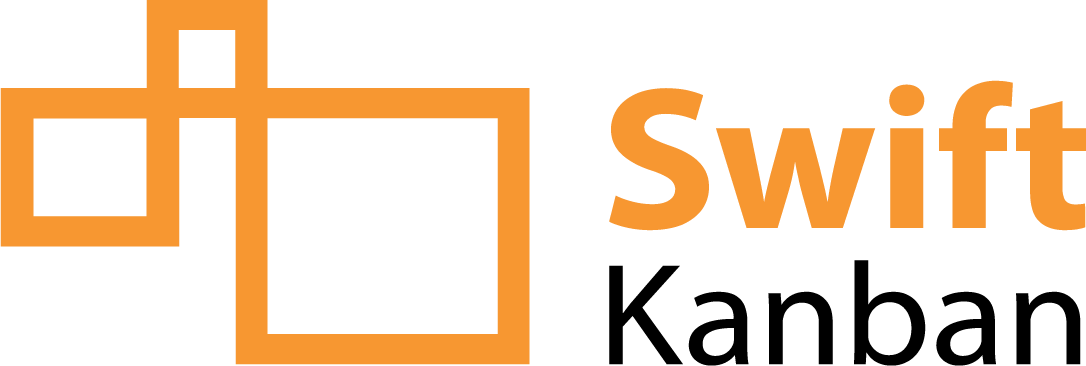Glossary
Archived – Archive is the last stage in the life-cycle of a work-item in SwiftKanban and contains completed cards(Stories/ Defects/ issues). This stage can’t be modified. The lead/ cycle time of a story is calculated when it is archived from the Kanban board.
Backlog – Backlog is a notional placeholder/ view which shows the consolidated list of work-items ( User Stories/ Defects/ Issues) which are to be worked upon. One can search through the Backlog and add cards to the Kanban Board.
Blocked – Blocked is an indicator on the board that there is a problem at hand, which needs entire team’s attention. When the card is marked as blocked, a red ‘Blocked’ tag appears on the card, which is easily visible on the board. While blocking, one needs to enter the reason due to which the card is being blocked. Once a card is blocked, it can’t be moved until blockage is resolved.
Blocked Time – This is the duration that the card was in a blocked state on the board.
Card – A card in SwiftKanban can be a user Story/ Defect or an Issue and represents a piece of work to be done.
Cumulative Flow Diagram ( CFD) – CFD diagram shows the count of cards in a particular state/ lane for each day between a specified duration.
Cycle Time – Cycle time in SwiftKanban is computed as the time it takes for a card to move from the first lane of the Board( Typically termed ‘Ready’ ) to the archived state. It represents the time a bug/ feature took to get completed, from the time it was prioritized.
Control Charts – Control charts display limits and which is the voice of the process. Points outside of these control limits are signals indicating that the process is not operating as consistently as possible; that some assignable cause has resulted in a change in the process. Similarly, runs of points on one side of the average line should also be interpreted as a signal of some change in the process. When such signals exist, action should be taken to identify and eliminate them. When no such signals are present, no changes to the process control variables (i.e. “tampering”) is necessary or desirable.
Dashboard – Dashboard is the landing screen that you see when you log in to SwiftKanban. It can be personalized by adding an array of widgets available in the ‘Add Widget’ view.
Lead Time – Lead time in SwiftKanban is computed as the time it takes for a card to move from the backlog state to the archived state i.e. the time when the card was created to when it was archived. It represents the total time a bug/ feature took to get completed, including the waiting time in the backlog.
Owner – A story/ Defect or Issue’s owner is the person the who’s currently assigned to it. Anyone who “pulls” a card from the backlog or any waiting lane and moves to working lane becomes the owner of the card in that lane. Such cards on which the user is owner are available in ‘My Inbox’ as well for quick reference.
Board– Work can be organized in SwiftKanban under boards. Within a board, you can create backlog items( User Stories/ Defects/ issues), invite people to work with you and set up your own Kanban board.
To-Dos– Each User Story in SwiftKanban can be broken further into a list of To-Dos. One can mark the ‘Current State’ of to-do as ‘Completed’ once the task is over. As the to-dos for any user stories are completed, the % completion of the user story increases. To-dos are available in ‘My Inbox’ of any user for quick reference.
Wait Time – Wait time in SwiftKanban is computed as the time any card was lying idle in any column of type ‘Completed and Waiting’. It represents the time a bug/ feature was waiting to be pulled from the previous queue.
Work-In-Progress Limit – A Work-In-Progress (WIP) limit is the limit set of the number of cards that can be worked on at any one time, in any lane. This allows people to focus on what’s important and not switch too much between tasks (which creates waste). WIP limits can be set by clicking on the ‘Modify Process’ link on the Kanban board.
Work Time – Work time in SwiftKanban is computed as the time it takes for a card to move in and out of any column of type ‘In progress’. It represents the time a bug/ feature was worked upon, in any of the columns.
